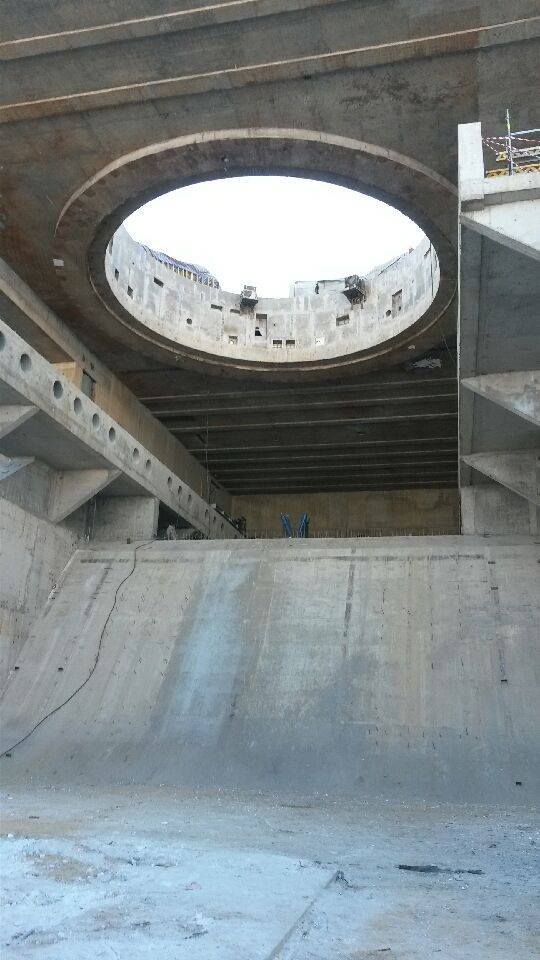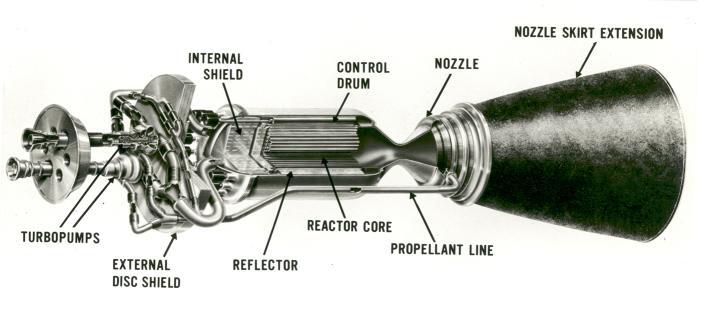News of the Vostochny cosmodrome, NASA nuclear engines and a fresh spot from SpaceX

Installation of the gas-V-ring of the Vostochny cosmodrome, Vladimir Smirnov / TASS
In an interview with the TV channel "Russia", the head of the Accounts Chamber Tatyana Golikova said that the cost overruns during the construction of the ground infrastructure of the Vostochny cosmodrome amounted to 13 billion rubles, reports TASS.
The indicated figure is only an estimate, which will be confirmed or refuted by law enforcement agencies. According to Golikova, the documents have already been sent to the Investigative Committee. According to the representative of the Accounting Chamber, the overrun was possible due to the overestimation of the real cost of construction and misuse of funds.
Vostochny is designed to provide Russia with a spaceport on its own territory. Today Roskosmos can launch manned spacecraft only from Baikonur in Kazakhstan, the lease term of which is finite. President Putin has already warned about the inadmissibility of "squandering" of funds during a visit to the Accounts Chamber on January 28 of this year - this is also due to anti-crisis measures. About two months ago , the head of the directorate of the Vostochny cosmodrome, Sergey Sklyarov, was dismissed.
')
The infrastructure of Vostochny is far from complete, construction is late. This was during a visit to the cosmodrome on December 29, 2014, by Deputy Prime Minister Dmitry Rogozin told representatives of the Center for the operation of ground-based space infrastructure, which is part of Roscosmos.

Photo from Dmitry Rogozin's Facebook account
Rogozin is at the cosmodrome at least once a month. As planned , this Friday, December 30, Rogozin again visited Vostochny and noted that the backlog is still there. According to him, this month it was not possible to catch up with the graphics, although the dynamics are noticeable. Among the proposed measures to remedy the situation - webcams. Now they already exist and are working, but only for Rogozin himself. It is assumed that anyone will be able to follow construction from the Internet, which will provide some kind of “popular control”. Access will be open on the websites of Roskosmos and the Board of the Military-Industrial Commission of the Russian Federation.
Rogozin acknowledged that the region’s harsh weather conditions affect the speed of work. It was proposed to strengthen coordination between the customer and the contractor: according to Rogozin, in recent months there have been unacceptable situations when these parties accused each other of disrupting the construction deadlines. The vice-premier said that building on the contrary should strengthen, especially if we take into account external sanctions pressure.
Now the construction should reach the finish line. Rogozin even noted that the countdown begins. All dates remain in force: the entire infrastructure must be ready for the summer, the first flights are scheduled for December, and the first manned launch is scheduled for 2018. In 2015, the creation of launch and technical complexes for the new Angara rocket will begin. Full commissioning is scheduled for 2020. Already on March 15, a test complex for the Soyuz-2 was scheduled to be transferred to the Center for the operation of ground-based space infrastructure facilities for independent testing of the site.
The main force construction of the launch pad has already been completed, the scaffolding supporting the structure has been removed. Pavel Buyanovskaya, deputy head of the Far Eastern central department of Spetsstroy for the construction of special-purpose facilities, says that the main forces are concentrated on launch and technical complexes, buildings and structures that will be needed to launch the Soyuz-2 rocket at the end of the year. TASS recalls that labor shortage has repeatedly been noted, and throwing efforts to a minimum of critically necessary objects helps only partially.
The condition of the force floor of the Soyuz-2 missile launch complex is of concern - less than half the work has been done. The deputy director of Spetsstroy, Alexander Mordovets, said that the soils were frozen by 1.5-1.7 meters, but they could be heated for 60-70 days. It is proposed to carry out work on frozen soil - according to the data of the soil intakes and engineering surveys, after thawing the soil will not change its technical properties. Now it is proposed to test a new technology, since it is too new.
New movie SpaceX
Video Link
On January 27, SpaceX, a private space company, published a video with its vision of the future launch of a heavy rocket with the re-use of its parts. The animation on the launch pad contains the Falcon Heavy rocket, which consists of a Falcon 9 core and the first two stages of the same rocket as accelerators. The principle of construction is similar to what is incorporated in the Delta IV Heavy or variants of the "Hangars". The Falcon Heavy rocket with a height of 68.4 meters and a mass of 1,462.84 tons will be able to deliver 53 tons of cargo to low-Earth orbit, 21.2 tons to a geo-transition orbit, or 13.2 tons to Mars. The head of SpaceX, Ilon Musk, states that, in terms of payload, this is the heaviest rocket in history, if not to take into account the Saturn V lunar program of the USA. The first real launch of Falcon Heavy is scheduled for 2015.
In the video, the rocket starts from Cape Canaveral. After separation, the boosters return and synchronously sit down on platforms specially prepared for them. A little later, the first stage also follows their example. The video does not show what happens with the second stage, but it probably burns down in the atmosphere in a few days - the residents of Blagoveshchensk have already seen this. Re-use of parts of missiles will reduce the cost of launching several times.
At the moment, SpaceX has already tried to land one of the steps, but on an offshore platform, and not on land. Success was only partial. In the final stage of landing in the open circuit of the hydraulic control drive, the liquid ran out , therefore, the supersonic control wheels could not correct the position of the step, and it fell firmly on the deserted barge. The next time this fluid will be one and a half times larger.
NASA and YARD

It is assumed that approximately in the thirties of this century, NASA will land a man on the surface of Mars. And the agency’s engineers are seriously thinking about using engine technologies other than chemical ones. According to the presentation of October last year from Dr. Michael Hauz, who works at the George Marshall Space Center, NASA is considering the possibility of using nuclear rocket engines .
We are talking about engines that supply working fluid (usually hydrogen) to a heating chamber with a nuclear reactor, in which gas is heated and ejected through a nozzle, creating jet thrust. Research in this area was conducted in the fifties of the last century, but it didn’t lead to anything - until now, chemical rocket engines are the only way into Earth’s orbit and beyond.

The report shows the modular design of the spacecraft, which allows flexible use of the potential of the engine
YARD is also understood to mean impulse engines pushing a ship by the force of an explosion of atomic bombs, but the presentation of Hauz was about the first variant. The report presents possible ship designs and touches upon the issues of protecting astronauts from neutron radiation. According to the report, 200 kilowatts of energy can be produced from a kilogram of uranium over 13 years, that is, the fuel efficiency is 45 grams per 1000 MWh. It will be possible to save on the amount of rocket fuel: nuclear engines more effectively consume the working fluid. Flight time to Mars will be approximately halved .
Now Dr. Hauz and his colleagues are conducting research on the possibility of using nuclear rocket engines: they are elucidating the characteristics of various types of nuclear fuel in order to find a suitable sample in terms of performance and operating time. These tests will run until June 2015. The results of the work can lay the foundation for future tests and for the possible use of new technology for flights to Mars. Also, in the event of a successful development of events, the use of YARDs on expeditions to the Moon, Kuiper Belt and other objects of the Solar System is likely.
At the moment, the YARD has never been used in real rockets, there were only experiments in the USSR ( RD-0410 ) and the USA ( NERVA ). In both cases, the reactor core was solid, although options are possible in the form of a melt, hot gas or plasma. On the way of such a radically new project there can be both technical difficulties and a limited NASA budget.
Source: https://habr.com/ru/post/376067/
All Articles